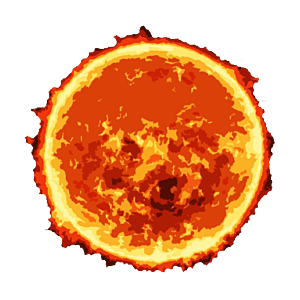The Downlink • Dec 17, 2021
Who loves the Sun?
Space Snapshot

Sometimes it’s easy to forget that the Sun is a beautiful ball of seething plasma. This image from astrophotographer Andrew McCarthy serves as a good reminder. To create the stunningly detailed image he combined 150,000 separate photos captured with extreme magnification through a modified telescope in his backyard. You can find more of his work on his website and Instagram.
You love space, now take action
This weekly newsletter is your toolkit to learn more about space, share information with your friends and family, and take direct action to support exploration. Anyone can subscribe at planetary.org/connect to receive it as a weekly email.
Mission Briefings


For the first time ever, a spacecraft has touched the Sun. NASA’s Parker Solar Probe (PSP) recently flew through the Sun’s upper atmosphere, sampling particles and magnetic fields in the corona. The new data will help scientists learn more about our Sun and how it influences other parts of the solar system. Pictured: Views from PSP as it passed through the corona. See an awe-inspiring video compilation of the images here. Bright features moving upward in the upper images and angled downward in the lower row are coronal streamers, which up until now had only been seen from afar. Image credit: NASA/Johns Hopkins APL/Naval Research Laboratory.

ESA-Roscosmos ExoMars Trace Gas Orbiter (TGO) might have found water in “Mars’ Grand Canyon.” TGO’s FREND instrument detected large amounts of hydrogen within Valles Marineris, meaning there could be water ice or water-rich materials within the uppermost part of the soil. The discovery is somewhat unexpected since most of the water on Mars is found in the planet’s icy poles.

JWST is delayed…again. NASA has bumped the launch date to Dec. 24 at the earliest; the space agency says it’s working on resolving a “communication issue” between the observatory and launch vehicle system. We’ll (hopefully) just have to wait a few more days.
From The Planetary Society


When the Sun goes down, point your camera up. There’s a lot that you can capture in the night sky with a DSLR camera, and our newest video tells you exactly how. This step-by-step guide shows you how to take amazing photos of the Moon, the Milky Way, and star trails.

Antsy for the JWST launch? While you wait for the mission to finally take off, check out our comprehensive guide to everything you need to know about JWST. You can also hear directly from three of the mission’s scientists (Rene Doyon, Heidi Hammel, and Michael McElwain) on this week’s Planetary Radio about what to expect from the powerful space observatory.
Space exploration doesn’t just happen. It needs your support.

When you donate to The Planetary Society’s Planetary Fund, you help make historic missions and advancements possible. Make a gift today and support our mission to empower the world’s citizens to advance space science and exploration.
Plus, now through December 31, your gift will be doubled up to $100,000 thanks to a special matching gift challenge!
What's Up

Moving up and left from the western horizon look for Venus, Saturn, then Jupiter in the evening sky, shining brightly. Below Venus, you may be able to see Comet Leonard with binoculars or a telescope if you’re in a dark sky site. Learn more at planetary.org/night-sky.
Wow of the Week

This oil painting from Planetary Society member Jackie Kingon is titled “Sunshield.” Jackie also writes science fiction comic mysteries, including “P is for Pluto” and “Sherlock Mars.”
We love to feature space artwork in the Downlink. If you create any kind of space-related art, we invite you to send it to us by replying to any Downlink email or writing to connect@planetary.org. Please let us know in your email if you’re a Planetary Society member!


 Explore Worlds
Explore Worlds Find Life
Find Life Defend Earth
Defend Earth


